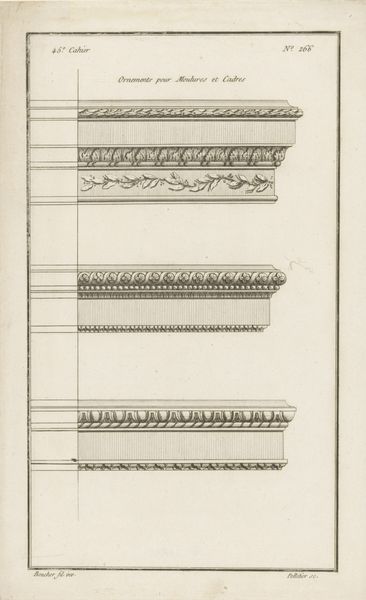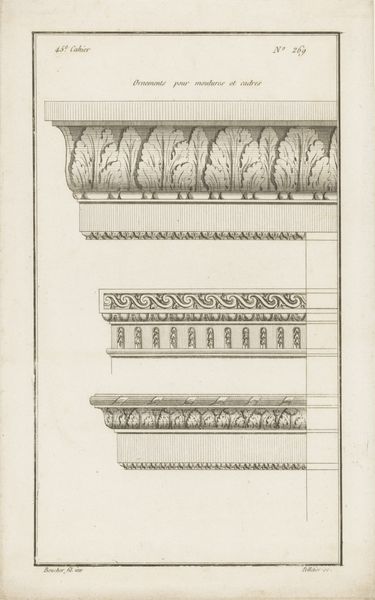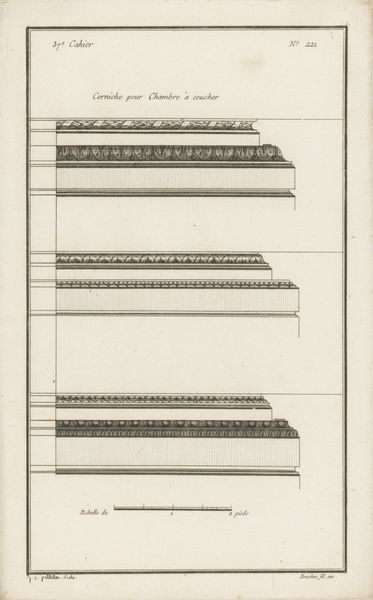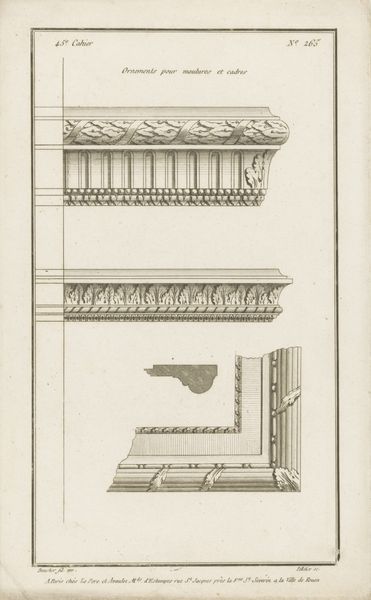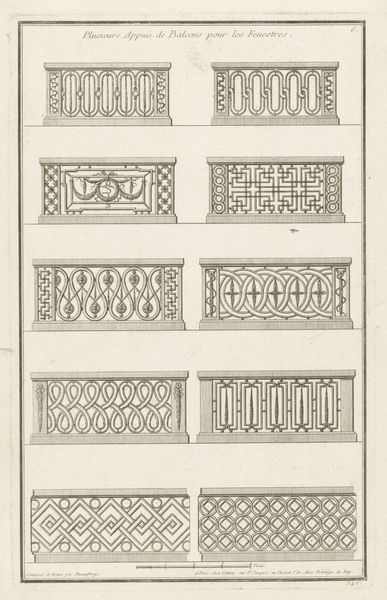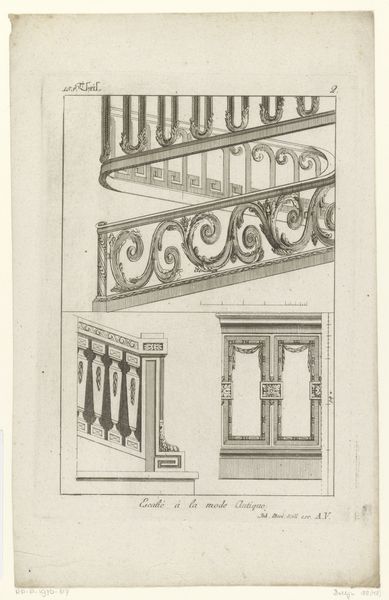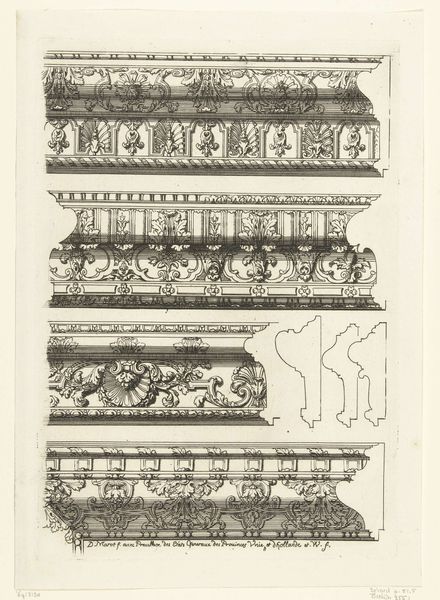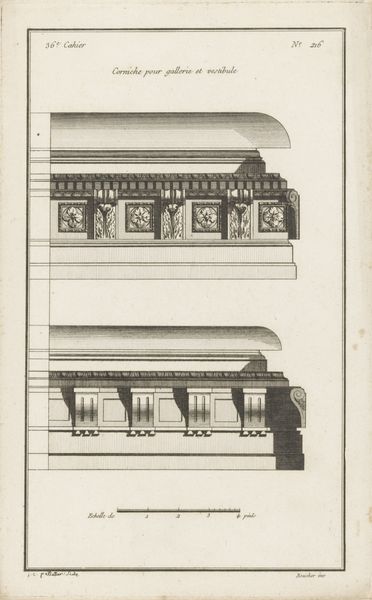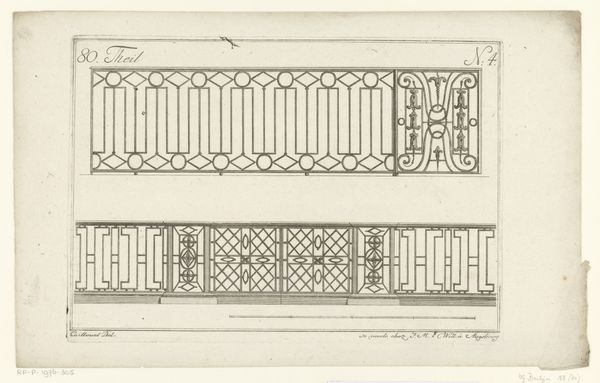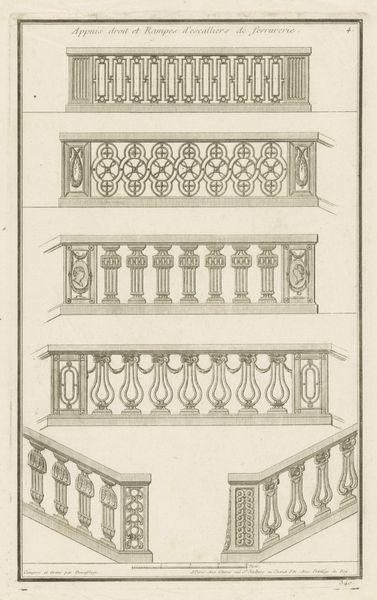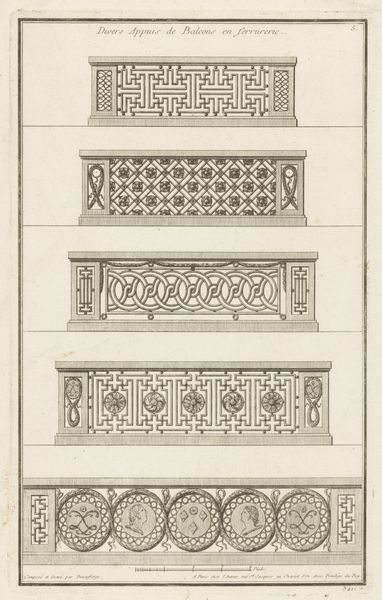
drawing, paper, engraving
#
drawing
#
paper
#
geometric
#
classicism
#
line
#
history-painting
#
engraving
Dimensions: height 331 mm, width 204 mm
Copyright: Rijks Museum: Open Domain
Curator: This drawing, called "Vier lijsten" or "Four Frames," was created between 1772 and 1779 by Jean Pelletier. It's rendered in engraving on paper and currently held at the Rijksmuseum. Editor: My immediate reaction is cool precision. The lines are so clean, so meticulously rendered. The composition feels very architectural, almost like blueprints for… well, frames. Curator: Exactly. These aren’t just decorative drawings; they’re designs, potentially for picture frames or architectural moldings. I’m struck by how this relates to production. The repetitive motifs suggest a serial process, perhaps designs meant to be manufactured or replicated by artisans. There's a functional aesthetic that anticipates industrial production. Editor: Ah, but before industrial production comes symbolic language! Think of the repeated motifs, like those acanthus leaves—a clear nod to classical antiquity. They carry so much baggage; evoking ideals of order, reason, and enduring beauty, these geometric details become the visual vocabulary of power. Curator: I see your point about the classical references. And these shapes definitely imply an intellectual movement toward balance and logic during the time it was created. Still, the choice of materials - paper, engraving ink - the skills involved in producing this precise linear rendering, speaks to craft, the artisanal, a slower process that mass production is looking to remove from the creative chain. It really underscores the shift happening then between hand production and machine production. Editor: But even in potential "mass production," consider the individual artisan still charged with interpreting the design, the subtle variations inevitably introduced. Even repetition becomes charged with human touch and interpretation! Each leaf, even mechanically reproduced, echoes a Roman ideal; the enduring legacy, not just material replication. Curator: Interesting… So it seems that even when analyzing the design and potential process, there is no denying a reference and continuation of earlier belief systems. It makes one think of the labor division but also a continuity that goes beyond the process itself. Editor: Precisely. This gives one a deep historical memory, a fascinating case study of artistic vision filtered through technique and symbolism.
Comments
No comments
Be the first to comment and join the conversation on the ultimate creative platform.

